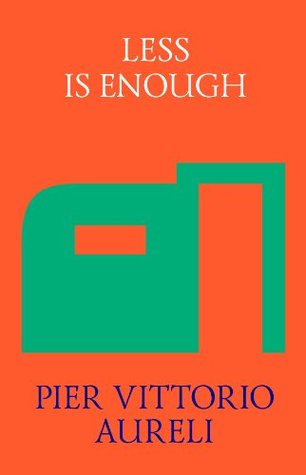More on this book
Kindle Notes & Highlights
Read between
December 18 - December 18, 2018
We will see that asceticism is not the preserve of monks in cells but, on the contrary, suffuses everything from the logic of capitalism itself to the concept of ‘social’ housing and the ideological rhetoric of minimalist design. The question is, can it lead us towards a different way of life than the one forced upon us by the status quo?
Asceticism is thus not just a contemplative condition, or a withdrawal from the world as it is commonly understood, but is, above all, a way to radically question given social and political conditions in a search for a different way to live one’s life.
And yet those who embraced monastic life also did so as a way of refusing the integration of the Christian faith within the institutions of power. The origins of monasticism in the West coincide with the recognition of the Catholic Church by the Roman Emperor Constantine and the beginning of a political and cultural alliance between Church and State. Although this alliance gave the Church immense power, it also eroded its ‘underground’ identity, which was crucial for its proselytism.13 For many Christians, the institutionalisation of the Church put it on a path of fatal compromise and decline.
...more
This highlight has been truncated due to consecutive passage length restrictions.
The idea of a structure where individual and collective life are juxtaposed without being merged is also evident in Carthusian monasticism, which attempted to combine eremitic and cenobitic life in the same place. One of the most remarkable examples of this tradition is the Monastery of Galluzzo, near Florence, which had a strong influence on Le Corbusier’s idea of collective housing. In this monastery, the cloister binds together nine distinct houses, each of them equipped with a garden and basic facilities for individual living. The architecture is modest and austere, but the possibility of
...more
The cenobitic monastery provides us with the first instance of the management of time through strict scheduling.
Within the monastery, form follows function in the strictest way possible. Like a functionalist building, the typical form of the medieval monastery is simply an extrusion of the ritual activities that take place within. If we observe the plan of the monastery we see a perfect coincidence of time and space: each segment of the day is ritualised through a specific activity that takes place in a specific part of the monastery. The introverted space of the cloister, the point of access to most of the facilities, gives a precise form to communal life and the sense of sharing, while the simple
...more
The plan of the monastery suggests an architecture that is conceived to be completely self-sufficient, and self-sufficiency is central to the communal life.
Benedictine monasteries were highly productive, becoming centres of power and wealth to the point where the order’s most famous monastery, Cluny, expanded into a city in its own right. Against this, the early Franciscans openly rejected the idea of private property, meaning not just individual possessions but, above all, the possibility of owning the work of others – of owning potential capital, in the form of land or tools. The desire to secure ownership of something is motivated not just by its use but by its potential to become an economic asset, to generate profit. If one refuses ownership
...more
A fundamental tenet of the early Franciscan order was indeed the refusal to own things, as a way of refusing their potential economic value and thus the possibility of exploiting others. Rather than owning a robe, a house or a book, they would use these things. Here use was understood not as a value but as the act of sharing things, as the supreme form of living in common. Use implied the temporary appropriation of an object by an individual; after its use, the object would be released and thus shared with others. In its simplicity, this conception of use implied a radical abdicatio
...more
Private property and its accumulation became not simply a means of power, but a sort of transcendental instigation for people to become more focused, and thus dependent, on their economic condition.
In the reborn cities of the Middle Ages, owning private property was a precondition for citizenship. In this way, individual ownership became the foundation of modern political institutions. The house was no longer just a shelter, or the ancient oikos, the private household clearly separated from public space. It was now both a space of inhabitation and the economic and legal apparatus through which the rising modern state governed citizens by defining their most intimate conditions, that is their habits, customs and social and economic relationships. From the vantage point of governing
...more
For these subjects Serlio proposes a minimum dwelling unit which clearly reflects the ascetic character of the inhabitant. But here asceticism is not the inhabitant’s choice. Serlio’s little house is not for the hermit, or for those who have consciously chosen to reject private property. The poverty embodied by Serlio’s minimal house is a ‘productive’ poverty because it makes living conditions for the poor a little more bearable, so enabling them to reproduce their labour and to become productive subjects, ‘workers’.
And yet, the very goal of the Dom-Ino model was to provide the lower classes with a minimum property that would allow them to become entrepreneurs of their own household condition. This same principle has been applied on a mass scale in the development of many Mediterranean cities since the postwar period, most notably Athens and Rome. Here the possibility of ownership has been extended to all classes, especially the lower classes, by tacitly encouraging the small-scale building industry. The goal of these economic processes is to form a society of owners where even the smallest, seemingly
...more


